#king baum
Text
Happy B-day!! 13/07
Main: Shaoran-kun, King Baum
Shaoran-kun, from CCS

King Baum, from OP
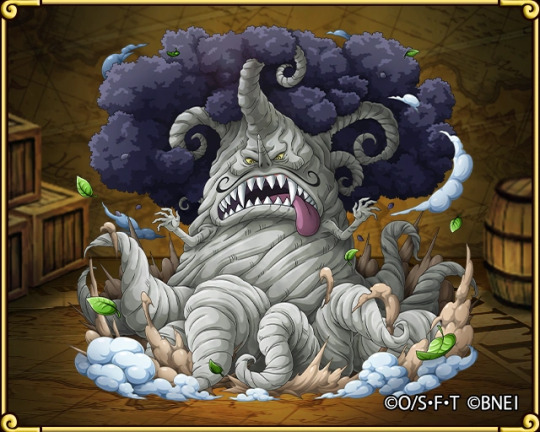
#happy b-day!#happy birthday#li shaoran#shaoran li#li syaoran#syaoran li#CCS#SCC#card captor sakura#sakura card captor#sakura cazadora de cartas#king baum#OP#one piece
2 notes
·
View notes
Text
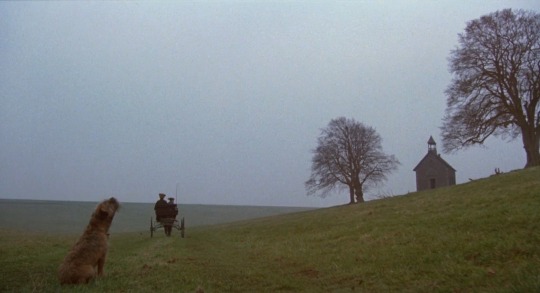

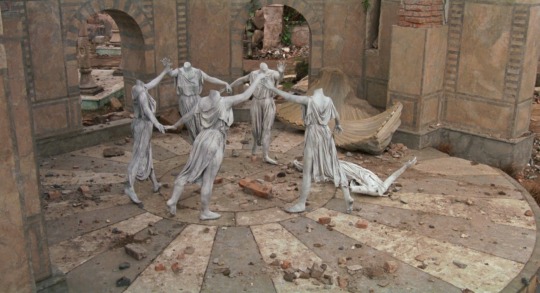
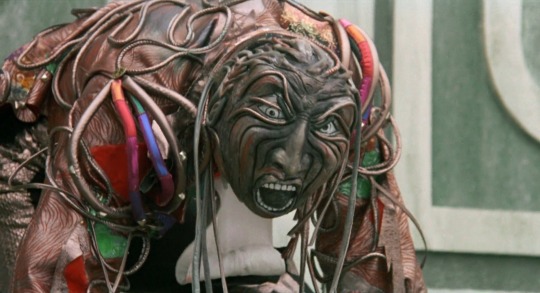

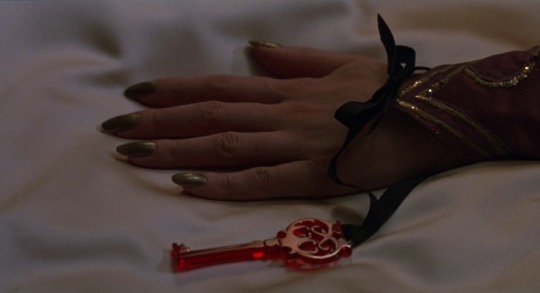

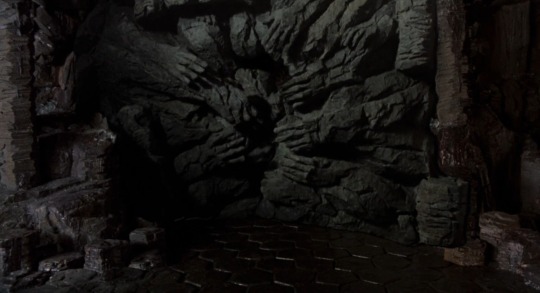
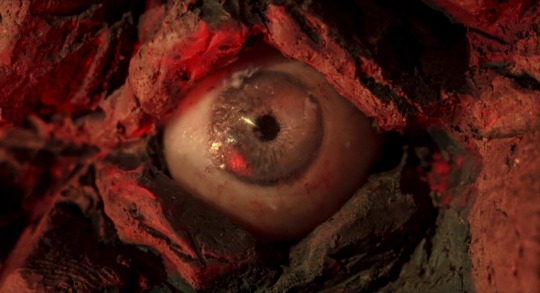
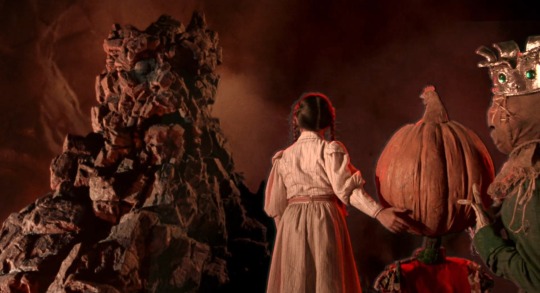

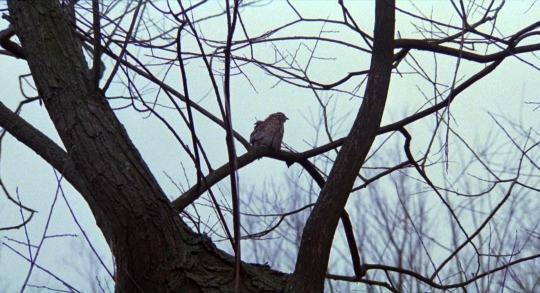


He said is this the return to Oz?
The grass is dead
The gold is brown
And the sky has claws
Return to Oz (1985)
Directed by Walter Murch
Written by Gill Dennis and Walter Murch
Based on The Marvelous Land of Oz and Ozma of Oz, both written by L. Frank Baum
#return to oz#the wizard of oz#fairuza balk#l. frank baum#walter murch#fantasy#dark fantasy#horror movie#horrorfans#wheelers#princess mombi#nome king#dorothy gale#emerald city
582 notes
·
View notes
Text
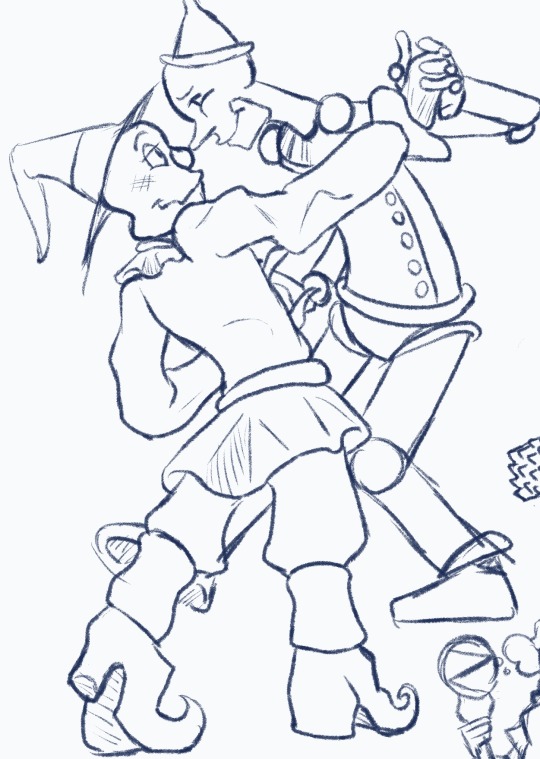

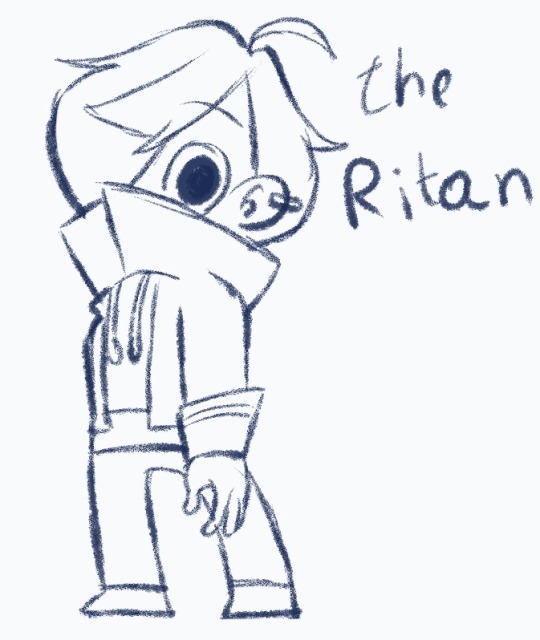

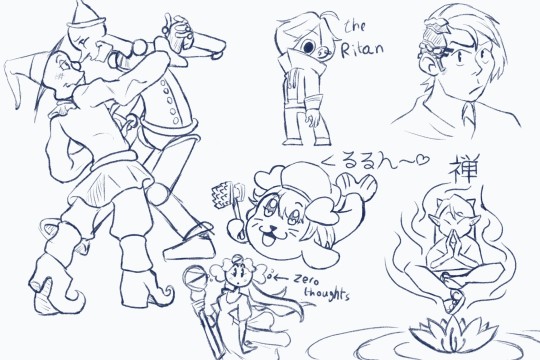
Some doodles cause I'm tired
#my art#digital art#art#oz#touhou#touhou project#l frank baum#doodle#royal sentai kingohger#ohsama sentai kingohger#osama sentai king ohger#rita kaniska#gira hastie#zanmu nippaku#princess ozma#tincrow#tin woodman#the scarecrow#delicious in the dungeon#falin thorden#kururun#precure
51 notes
·
View notes
Text
Scarecrow: wow! The nome king really hates us, Nick.
Tin man: yes. Perhaps he's homophobic.
Scarecrow:…but we’re not gay, Nick.
Tin man: we’re not?
#wizard of oz#l frank baum#tin man#tin woodman#nick chopper#scarecrow#the wonderful wizard of oz#tincrow#nome king
61 notes
·
View notes
Photo
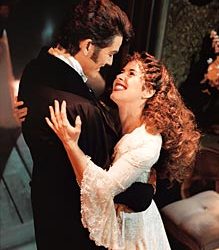


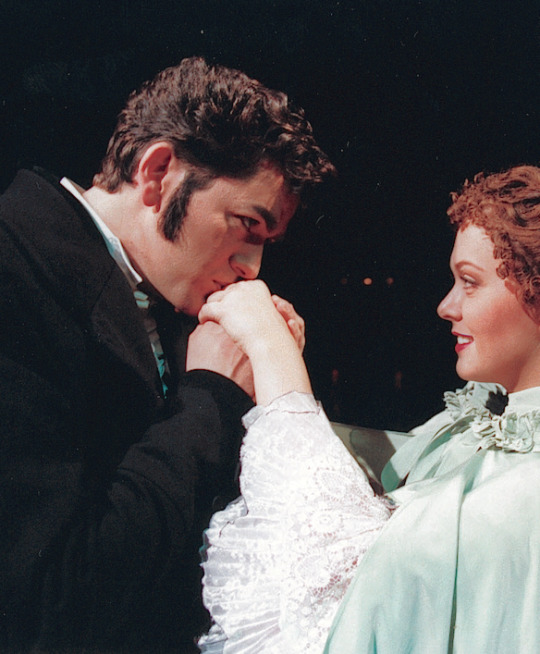



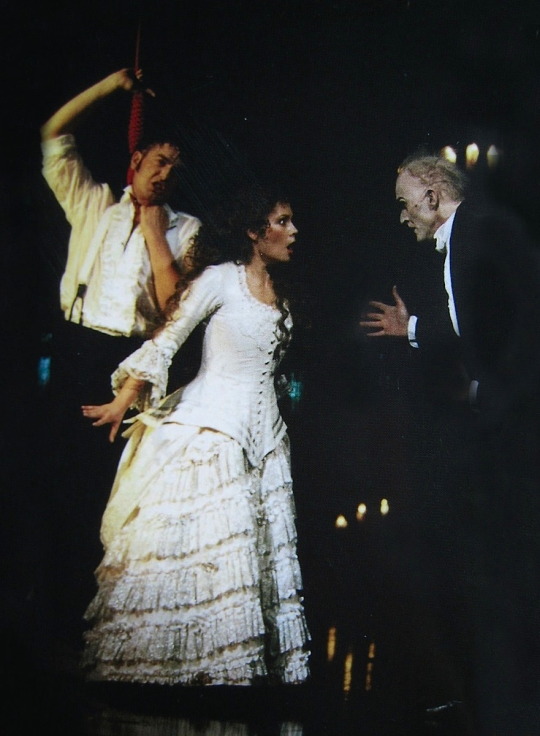


FAVOURITE PHOTOS OF BJÖRN OLSSON AS RAOUL
With Colby Thomas, Hamburg
With Colby Thomas, Hamburg
With Viktoria Krantz Tocca, Copenhagen
With Viktoria Krantz Tocca, Copenhagen
With Hanne Damm, Copenhagen
Björn Olsson, Basel
Björn Olsson, Hamburg
With Hanne Damm and Peter Jorde, Copenhagen
Björn Olsson, Hamburg
With Ute Baum, Basel
(he was also u/s Raoul in the original Stockholm production, but I have never found any photos of that)
#king of sideburns#björn olsson#raoul de chagny#phantom of the opera#phantom der oper#colby thomas#viktoria krantz#hanne damm#ute baum
93 notes
·
View notes
Text
The Politics of Oz
Now for the upsetting conclusion to my series of Oz posts.
The entire essay will not be here on Tumblr. What you see here is a preview, just the first part of the longer whole. You can read the rest on my website here.
I sure would appreciate someone seeming to consider something I wrote. If you know people who might be interested, you could share it too. What do I have to do, grovel? What do you want from me bah whatever okay here's the preview (grumble grumble)
1. The Riches of Content: Oz as Pastoral, Feminist Socialist Utopia
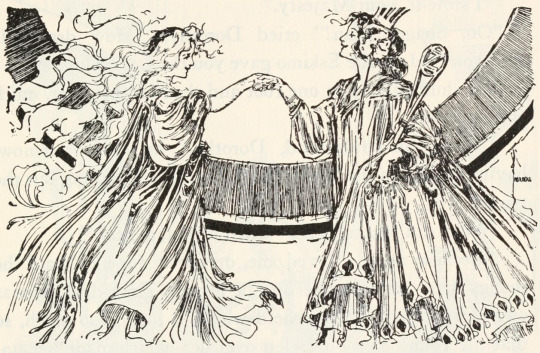
In the original 1900 novel The Wonderful Wizard of Oz, the Land of Oz is fecund and full of friendly people but still a dangerous, socially unstable place. After Ozma ascends to rule the Emerald City of Oz in the second novel, she “civilizes” Oz. L. Frank Baum frames the civilized Oz not as a land of peril and adventure but as a land of wonder and delight. (“Civilizes” might seem like a questionable term for me to use, so put a pin in that.) Ozma’s “civilized” Oz is a counterpoint to the “big, cold, outside world” (Road to Oz 196). This outside world refers to the mundane labor and economic deprivation of the cruel, bleak United States and also the various analogous scary and unfriendly people and monsters who live outside Oz, including Evoldo, the Mangaboos, the Scoodlers, the Phanfasms, the Boolooroo of Sky Island, the Raks, Cor and Gos, and other tyrants and evil spirits. Chief among these is the Nome King, the only major recurring villain in the series.
A number of commentators have interpreted Ozma’s Oz as a utopia, including Sally Roesch Wagner in “The Wonderful Mother of Oz” and Suzanne Rahn in “Beneath the Surface of Ozma of Oz,” both of which I will return to below. Jack Zipes also understands Baum’s Oz as a socialist, matriarchal utopia in “Inverting and Subverting the World With Hope” in Fairy Tales and the Art of Subversion. All three of these writers take Oz as a rejection or condemnation of American capitalism, though bizarrely Wagner and Zipes both interpret the Oz of the original novel, where travel is deadly and there are multiple slave-driving dictators, as already utopian. I will start by exploring what values distinguish Oz as good��and correspondingly define the nature of evil in the Oz novels, concentrating on the first six books but drawing from Baum’s later work as well.
Content warning: This portion will not be on Tumblr, at least not now. But to spoil the big twist, this essay will quote and cite some very racist material. I will also discuss, with nothing graphic or detailed, genocide and other heavy topics that might be upsetting to some readers. I do not present these subjects to be shocking but hope to ultimately teach something or other.

Because Baum originally intended to end the series with The Emerald City of Oz, it serves to an extent as a statement of the series’ values overall. In this novel, the utopian, nonviolent Oz is pitted against the decidedly not-utopian Nome King and the Whimsies, Growleywogs, and Phanfasms, who want to pillage the land and enslave its people. Fittingly, for the first time, Baum describes the Ozite economy in detail. At least, this is the economy of Oz after Ozma and her allies “civilize” the land. The entire passage is relevant:
[The Emerald City] has nine thousand, six hundred and fifty-four buildings, in which lived fifty-seven thousand three hundred and eighteen people, up to the time my story opens.
All the surrounding country, extending to the borders of the desert which enclosed it upon every side, was full of pretty and comfortable farmhouses, in which resided those inhabitants of Oz who preferred country to city life. [Later novels contradict this claim, filling Oz with jungles, dangerous mountains, and other urban centers.]
Altogether there were more than half a million people in the Land of Oz—although some of them, as you will soon learn, were not made of flesh and blood as we are—and every inhabitant of that favored country was happy and prosperous.
No disease of any sort was ever known among the Ozites, and so no one ever died unless he met with an accident that prevented him from living. This happened very seldom, indeed. There were no poor people in the Land of Oz, because there was no such thing as money, and all property of every sort belonged to the Ruler. The people were her children, and she cared for them. Each person was given freely by his neighbors whatever he required for his use, which is as much as any one may reasonably desire. Some tilled the lands and raised great crops of grain, which was divided equally among the entire population, so that all had enough. There were many tailors and dressmakers and shoemakers and the like, who made things that any who desired them might wear. Likewise there were jewelers who made ornaments for the person, which pleased and beautified the people, and these ornaments were free to those who asked for them. Each man and woman, no matter what he or she produced for the good of the community, was supplied by the neighbors with food and clothing and a house and furniture and ornaments and games. If by chance the supply ever ran short, more was taken from the great storehouses of the Ruler, which were afterward filled up again when there was more of any article than the people needed.
Every one worked half the time and played half the time, and the people enjoyed the work as much as they did the play, because it is good to be occupied and to have something to do. There were no cruel overseers set to watch them, and no one to rebuke them or to find fault with them. So each one was proud to do all he could for his friends and neighbors, and was glad when they would accept the things he produced. (29–31)
The Tin Woodman also clarifies some of the economic system in The Road to Oz:
“If we used money to buy things with, instead of love and kindness and the desire to please one another, then we should be no better than the rest of the world,” declared the Tin Woodman. “Fortunately money is not known in the Land of Oz at all. We have no rich, and no poor; for what one wishes the others all try to give him, in order to make him happy, and no one in Oz cares to have more than he can use.” (164)

In “Beneath the Surface of Ozma of Oz,” Rahn draws parallels between Baum’s description of the Oz in these two novels and the socialist utopia in William Morris’s News from Nowhere (Rahn 26). The civilized Oz certainly resembles a utopian communist dictatorship but wears the clothing of a hereditary monarchy. There is no rule by the proletariat, for there are no proletariat, landowners, or bosses in Oz, yet there is a single ruler whose legitimacy rests on her being the daughter of the king who ruled before the advent of the Wizard and the Wicked Witches. Private property has been abolished through, paradoxically, the universal private ownership of all property by Ozma, who allows this property to be shared equitably among the people—how fortunate for the Ozites that Ozma stops aging. The abundance of material wealth, particularly gems and precious metals, is used in ostentatious displays, but these resources are common enough that they are ubiquitous among all Ozites. The people receive everything they desire. They work and produce of their own free will for nothing but satisfaction and the benefit of themselves and their neighbors. Baum might as well have included the famous socialist slogan “From each according to his ability, to each according to his needs.”
In the “uncivilized” Oz of the original novels, the economic system is contrary to that outlined in The Emerald City. The Wicked Witches force the Munchkins and Winkies to live in terror and perform slave labor to benefit their rulers, and even among the Ozites themselves there are property-based class differences. The law of the uncivilized Oz is exactly the opposite of that of Ozma’s communal utopia, as the fraud Wizard makes explicit: “You have no right to expect me to send you back to Kansas unless you do something for me in return. In this country everyone must pay for everything he gets” (128). Of course, the Wizard says this knowing he cannot pay Dorothy what he owes her. The contrast to this earlier Land of Oz emphasizes the utopian nature of Ozma’s socialist Oz, which rejects the harsh American “no free lunches” morality the (as yet) unenlightened Wizard carries over from his US homeland. Hence it is civilized, while what came before is not.
The existence of multiple monarchies means Oz cannot be communist in the sense leftists would usually understand the term. However, a communist ideology, as history attests, is by no means incompatible with dictatorship in the normal sense everyone uses, as is present in Baum’s Oz, rather than in the less intuitive sense of the class dictatorship that capital-C Communists intend. Furthermore, the material conditions of Oz are the most ideal version of a one-person communist dictatorship, so the dispute is only semantic, particularly because, unlike existing countries with lived complexity, none of this is real.
Another central aspect is that Oz is pastoral. Even the Emerald City, the largest urban center, has a tiny population of 57318. As Richard Tuerk points out in Oz in Perspective, this is the size of a small town and so a suitable capital for an idealized rural country (197). Note also that the above description of the economy features agriculturalists and artisans but no factories. There is metallurgy used to ornament buildings and people with the abundant gold but no industry or machines.
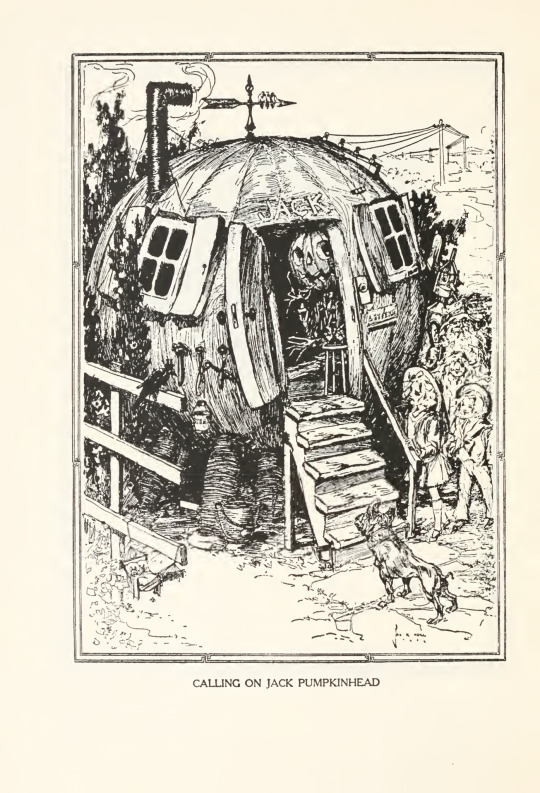
However, electricity is used: Ozma’s throne room contains “two electric fountains” (Emerald City 54), Oz has the infrastructure for the Shaggy Man to construct a wireless telegraph in The Patchwork Girl of Oz, the Wizard invents cellular phones decades early in Tik-Tok of Oz, and illustrations depict Jack Pumpkinhead’s house having electrical wires (Road 4) and Ozma keeping a telephone on her desk (Emerald City 192). The question of electricity generation is not explained at risk of undermining the fantasy of the redress of all social ills through mutual aid and abundance created without coercive authority. The answer is presumably magic, which Ozma strictly regulates.
In effect, for Oz, magic may correspond to industrial and electrical technology. Consider that Tik-Tok, a robot man, is explicitly a machine but is also magic, proven by how he can only function in fairy lands and not in the mundane world. “I do not sup-pose such a per-fect ma-chine as I am could be made in an-y place but a fair-y land,” as Tik-Tok says (Ozma of Oz 52). The utopian element is in the careful regulation and control of technology, preventing it from overwhelming people’s lives and destroying the idyllic natural beauty that Baum’s narration frequently describes. In the uncivilized Oz, magic runs rampant, the Wicked Witches using it to terrorize and enslave people, while in the “big, cold, outside world,” figures such as the Nome King use magic to similar ends. As Gore Vidal observed, “[C]ontrolled magic enhances the society just as controlled industrialization could enhance (and perhaps even salvage) a society like ours. Unfortunately, the Nome King has governed the United States for more than a century” (quoted in Zipes).
In “The Wonderful Mother of Oz,” Wagner argues that Baum infused his novels with feminist and theosophist concepts in conversation with his mother-in-law, the suffragette Matilda Joslyn Gage. According to Wagner, Baum modeled Oz off of the prehistoric feminist utopia described in Gage’s 1893 Woman, Church and State. Wagner writes, “Gage described a period of matriarchy in the world’s history before private property, industrialization, and organized religion introduced inequality, greed, and genocide. The female principle—the creative principle—was held sacred and supreme, and cooperation, not competition, was the order of the day” (10). While the girls in Oz are traditionally feminine save only the Wicked Witches, they also dominate the land. By the time of The Emerald City, the most powerful individuals in Oz are Glinda, Ozma, and Dorothy, later joined by Trot in The Scarecrow of Oz. Even in the “uncivilized” Oz, men such as the Wizard and Omby Amby (the Soldier with the Green Whiskers) are ineffective, whereas Dorothy, the Wicked Witches, Jinjur, Mombi, and Glinda possess genuine cunning and power.

The Marvelous Land of Oz may appear to contradict the general feminism of the series. However, Wagner offers a feminist reading. The novel concerns a group of boys (Tip, Jack, the Sawhorse, the Scarecrow, the Tin Woodman, and the Woggle-Bug) who face the all-woman Army of Revolt, unserious and childish girls parodying suffragettes. The woman soldiers are frivolous and incompetent, and their leader, Jinjur, does not aim for gender equality but to rule over men, as in the ugliest anti-feminist caricature of the period. However, women are genuinely powerful. The male-dominated Oz is completely powerless and easily falls, and the Army of Revolt prove competent antagonists. When Tip and his group reach the Emerald City and find men engaged in wifely chores, the Scarecrow has this interaction with one of the exhausted husbands that highlights the value and difficulty of domestic labor:
“I’m glad you have decided to come back and restore order, for doing housework and minding children is wearing out the strength of every man in the Emerald City.”
“Hm!” said the Scarecrow, thoughtfully. “If it is such hard work as you say, how did the women manage it so easily?”
“I really do not know,” replied the man, with a deep sigh. “Perhaps the women are made of cast-iron.” (170–171)
Wagner takes this to mean that the men have a newfound appreciation for the value of feminine labor. Jinjur ultimately loses but not to any men, none of whom are capable of the task. Instead, Glinda defeats her with a different all-woman army. Unlike Jinjur’s comical soldiers who fight with knitting needles and want new jewelry, Baum treats Glinda’s militant women with relative respect and seriousness, demonstrating women can be effective. “[T]hese soldiers of the great Sorceress were entirely different from those of Jinjur’s Army of Revolt, although they were likewise girls. For Glinda’s soldiers wore neat uniforms and bore swords and spears; and they marched with a skill and precision that proved them well trained in the arts of war” (237).
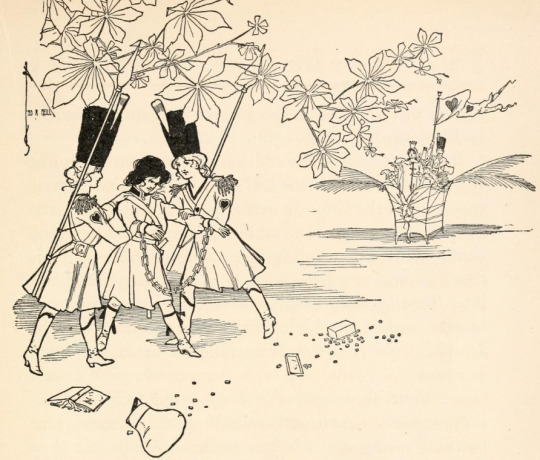
Furthermore, in the end, the boy hero Tip must become or even mature into a girl, Ozma, to prevail over Jinjur, though Wagner overstates when claiming the story “exposes the social construction of gender in all its complexity” (11). Jinjur’s childish scheme to invert gender roles fails, but a girl, Ozma, nonetheless ends up ruling with the authentic womanly power that Jinjur wants to see enthroned. The women also celebrate liberation from Jinjur (282–283). Instead of the supremacy of women, Ozma ensures equality.
The ascendancy of kind women instead of conquering Wicked Witches and a false Wizard is pivotal to the civilizing of Oz. It is Ozma’s gender equality and feminine power that changes the bleak albeit colorful land into a utopia. Later injustices are also corrected through the elevation of women and the removal of power from ill-intentioned men. In The Scarecrow of Oz, the Scarecrow, acting on behalf of the female Glinda, deposes Jinxland’s wicked King Krewl, a man, and Gloria, a woman, ascends the throne, ensuring peace and justice. Oz is a feminist utopia, particularly by the standards of the early twentieth century, when women in most of the United States were legally barred from even voting.
The legitimacy of power in Oz stems from mutual love enshrined in metaphorical kinship ties between ruler and subject. Good rulers, in Baum’s stories, are those who keep their subjects satisfied and who rule by consent. The people are Ozma’s “children,” whom she “[cares] for” (Emerald City 30). The series furnishes ample evidence of the love and devotion the Ozites have for Ozma:
“The Wonderful Wizard was never so wonderful as Queen Ozma,” the people said to one another, in whispers; “for he claimed to do many things he could not do; whereas our new Queen does many things no one would ever expect her to accomplish.” (Marvelous Land 285)
Everywhere the people turned out to greet their beloved Ozma. (Ozma of Oz 256)
And now they came in sight of the Emerald City, and the people flocked out to greet their lovely ruler. […] Thus the beautiful Ozma was escorted by a brilliant procession to her royal city, and so great was the cheering that she was obliged to constantly bow to the right and left to acknowledge the greetings of her subjects. (ibid. 258)
Everything about Ozma attracted one, and she inspired love and the sweetest affection rather than awe or ordinary admiration. (Road to Oz 204)
They [the people of Oz] were peaceful, kind-hearted, loving and merry, and every inhabitant adored the beautiful girl who ruled them, and delighted to obey her every command. (Emerald City 31–32)
A similar order prevails for Ozma’s subordinate rulers in the individual countries of Oz. The Wicked Witch of the West rules the Winkies through terror, using the people as her slaves. After her death, the Tin Woodman becomes the Emperor of the Winkies not through coercion or hereditary power but because “they invited him to rule over them” for his role in defeating her (Marvelous Land 121–122). Baum is concise: “Every one loved him, and he loved every one” (Road 164).
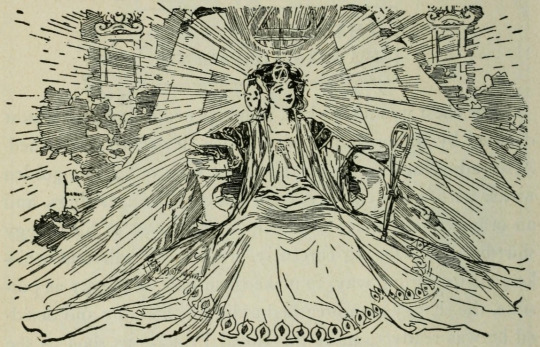
Wagner claims there is no coercive authority in Oz. While Ozma maintains a military, they are a mere twenty-seven people, adults pretending to be soldiers by dressing in military uniforms. A single infantryman, Omby Amby, is present in the first three novels, but his subsequent promotion means that the Emerald City military cannot execute violence. Afterward, Omby Amby becomes the single policeman in Oz instead. For Oz does have crime and punishment.
The Patchwork Girl furnishes an example of the legal system when Omby Amby (probably—his identity is inconsistent) arrests Ojo. Baum emphasizes this is extraordinary. Ojo is the first person arrested in Oz in “a good many years” (188), long enough that Omby Amby believed there was no reason for him to be the country’s only policeman. As stated in Dorothy and the Wizard in Oz, crime almost never occurs: “the people of that Land [Oz] were generally so well-behaved that there was not a single lawyer amongst them, and it had been years since any Ruler had sat in judgment upon an offender of the law” (237). Presumably, self-actualized and with their material needs satisfied, few people in Oz have any reason for crime, at least in the portions aligned with Ozma rather than “uncivilized” regions such as Jinxland.
The system that exists is humane. The prisoner’s identity is hidden from the public so that his reputation will not be damaged, and the prison itself is a luxurious house plated with gold and gemstones. Ojo receives lovelier meals than many impoverished people in the US, and the jailer, Tollydiggle, is more a kindly innkeeper than a guard. “The purpose of prison” in Oz, writes Wagner, is not “vengeance” as in the US but “helping the offender to build strength of character” (11). Ojo requires scant rehabilitation before his trial, where Ozma and the Wizard quickly find him guilty on the basis of their surveillance but pardon him no less swiftly. Ozma and Glinda maintain the peace through nonviolent means.
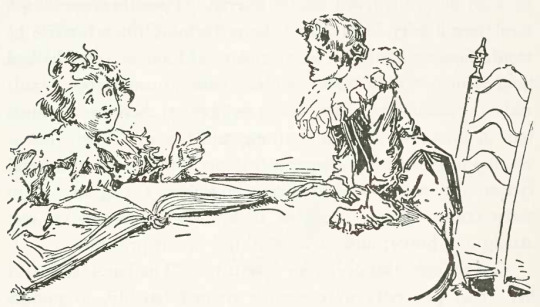
Furthermore, mercy and forgiveness are recurring valued traits. The good Ozites forgive not only minor offenders such as Ojo and Pipt but even seditious, dangerous enemies. Ozma spares Mombi’s life despite the years of abuse she personally endured as the latter’s slave, for instance, and Dorothy accepts Ugu’s heartfelt apology for his coup in The Lost Princess of Oz. While Oz has rulers, then, they do not possess or exercise coercive authority. “Ozma’s decision-making power rests literally and absolutely in carrying out the will of the people. Embedded in a truly egalitarian system, power comes from the people; it is not exercised over them. Respect for differences is a given” (Wagner 10).
Finally, Oz indeed respects difference, likely at least part of the reason for its lasting appeal among queer audiences, as Dee Michel describes in “Not in Kansas Anymore: The Appeal of Oz for Gay Males.” Michel primarily focuses on the MGM adaptation of The Wonderful Wizard of Oz, but he does not neglect the novels. In particular, he notes the presence of non-traditionally masculine men such as the compassionate, tearful dandy the Tin Woodman or the Cowardly Lion, a “sissy” who wears a bow in his mane: “they are about as un-macho as one can get and still be recognizably male” (Michel 34).


While Michel mentions the high level of physical affection present between the Scarecrow and the Tin Woodman, he neglects to note more overtly queer themes present in Baum’s text. Ozma is often read as transgender: seemingly a boy, she is a girl whose true nature the “uncivilized” version of Oz conceals from her until she succeeds in becoming her authentic self. Ozma and Dorothy’s mutual affection may appear to extend beyond what modern readers would take as just friendship. The two hug, smooch, and hold hands; live together; never show any romantic interest in any boys; and appear kissing each other on the lips in at least two of John R. Neill’s illustrations. Chick, originally appearing in John Dough and the Cherub before meeting Dorothy in The Road to Oz, is gender ambiguous or nonbinary, rejecting both boyhood and girlhood. Scraps reads as a queer allegory. “I must be the supreme freak. […] But I’m glad—I’m awfully glad!—that I’m just what I am, and nothing else” (Patchwork Girl 57). She rejects the birth name her oppressive parents Margolotte and Pipt intend for her, defiantly and joyfully embraces her unconventional identity, and rejects conservative gender roles in the country of the Horners.
“You have some queer friends, Dorothy,” [Polychrome] said.
“The queerness doesn’t matter, so long as they’re friends,” was the answer (Road 184).
Queerness, then, is welcome in Oz—especially uncommon given that Baum wrote them from 1900 to 1919. Michel proceeds to observe that diversity is a key value of Oz and quotes other writers on the subject:
Willard Carroll notes that “[Oz is] a community that celebrates the ultimate in creativity and diversity.” Similarly, Suzanne Rahn observes that “the characters themselves…are…fiercely tolerant of the outlandish, respecting, cherishing such rickety, sagging, unlikely colleagues as the Frogman, the Shaggy Man and Prof. H. M. Wogglebug, T.E.—a community of eccentrics. In Oz, they belong” (34).
Michel states, “All minorities would likely find Oz’s diversity compelling” (36). Put a pin in that. In addition to social outcasts, however, Baum treats Oz specifically as offering freedom from the capitalism of “the big, cold, outside world” in both The Road to Oz and The Emerald City. The former involves an American vagrant, the Shaggy Man, who “[has] slept more in hay-lofts and stables than in comfortable rooms” (196). In the mundane US, he is shunned and disliked, presumably for his frightening appearance and poverty. He steals the magical Love Magnet to force people to like him: “no one loved me, or cared for me, […] and I wanted to be loved a great deal” (208). The “big, cold, outside world” forces him to commit crime to have any hope of receiving love. However, in Oz, Shaggy is astonished to be welcomed into palaces and receive the treatment of a royal, for Oz “[has] no rich, and no poor” (165) and the people value only love, not money. So he chooses to remain there, though continues to wander the land for fun.
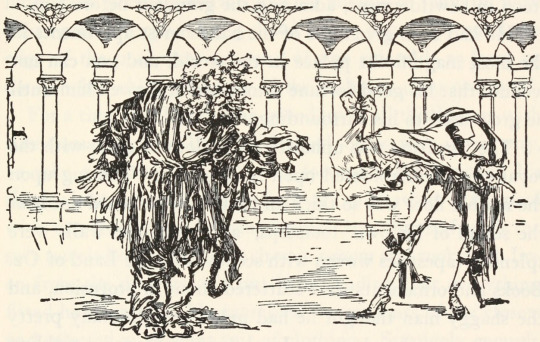
Similarly, in The Emerald City, Dorothy’s Uncle Henry and Aunt Em receive liberation from their poverty and debt in Kansas by moving to Oz. Baum depicts US life as brutal and withering. In The Wonderful Wizard, Dorothy, Henry, and Em inhabit a one-room shack. Henry “[works] hard from morning till night and [does] not know what joy [is]” (13). This life literally removes hope and happiness from Em: “[The sun and wind] had taken the sparkle from her eyes and left them a sober gray […] She was thin and gaunt, and never smiled, now” (12). After the cyclone destroys the house, Henry builds a new one, yet his health declines until he can no longer work. With the mortgage unpaid, the family is doomed to lose their home. In Oz, however, Henry and Em are overwhelmed with gold and gems and dressed in regal Munchkin clothing, with merry servants sparing them from ever working again.
“I’ve been a slave all my life,” Aunt Em replied, with considerable cheerfulness, “and so was Henry. I guess we won’t go back to Kansas, anyway” (269–270).
Slavery and freedom are major preoccupations throughout the series. The chief crime of the Wicked Witches, Nomes, Queen Cor and King Gos, and other powerful antagonists is the enslavement of others. Given the Em’s above comment, then, life in the economic conditions of the ordinary world is tantamount to slavery. The assorted evil forces outside of Oz correspond to the mundane violence of real societies, as Jack Zipes observes: “Baum draws a parallel between the bankers, who are merciless and crush old farmers who can no longer be employed because of bad health, and the Nome King and his allies, the Whimsies, Growleywogs, and Phanfasms, who want to enslave people to attain wealth and power.” Recall that Vidal similarly takes the Nome King to suggest the prevailing economic order of the US.
In The Emerald City, when the invasion of the Nome King and the evil spirits is imminent, Ozma and Oz further demonstrate utopian values in a nearly suicidal commitment to nonviolence. Ozma refuses to flee, believing she must share her subjects’ fate, and though the Tin Woodman, the Scarecrow, and the Shaggy Man advise Ozma to fight the Nome King, she rejects violent solutions because “No one has the right to destroy any living creatures, however evil they may be, or to hurt them or make them unhappy” (268).
The Scarecrow peacefully outwits the evil legions, deceiving them into drinking Glinda’s Water of Oblivion that reverts these miserable backstabbers to childhood innocence. Importantly, the Lethe-like Water of Oblivion makes them happier by erasing their greed and hatred: “The frowns and scowls and evil looks were all gone. Even the most monstrous of the creatures there assembled smiled innocently and seemed lighthearted and content merely to be alive” (284). The wicked Nome King himself becomes kind, at least until Tik-Tok of Oz, when he reverts to cruelty as a consequence not of his nature but of his office. Instead of plundering, enslaving, or scolding her now-harmless enemies, Ozma sends every one of the invaders back to their homes unharmed.
This nonviolence is fantastical and has no practical analogue to the real world—maybe, put a pin in that—yet serves as an ultimate statement of values. In the tradition of (stated) Christian ethics, Oz not only responds to violence with love but also redeems the wicked: “[T]o have reformed all those evil characters is more important than to have saved Oz” (289). The Wizard, Jinjur, Ugu, and eventually the Nome King himself, who drinks the Water of Oblivion a second time in The Magic of Oz and lastingly becomes innocent and happy, all receive similar second chances.
In the conventional and probably intended reading, Ozma’s Oz is an agrarian utopia representing progressive values: the end of private property, women’s power, tolerance and acceptance, and even police and prison abolition. But to what extent do the Nome King and the Whimsies, Growleywogs, and Phanfasms really represent greed, exploitation, and mercilessness?
Find out the answer to this question (and much more!) by reading on over at my website...
30 notes
·
View notes
Text
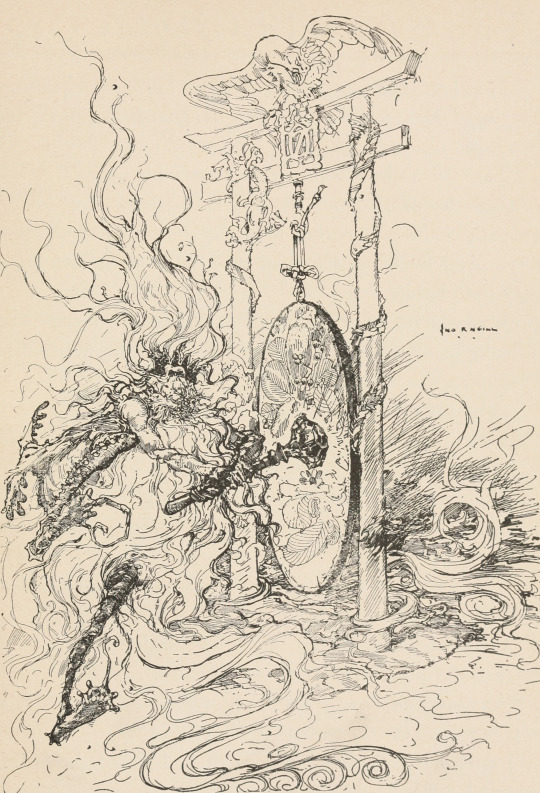
"He rushed to his big gong"
"The Emerald City of Oz" (1910) - John R. Neill
#the emerald city of oz#nome king#john r neill#wizard of oz#l frank baum#oz books#early 1900s#illustration
15 notes
·
View notes
Photo
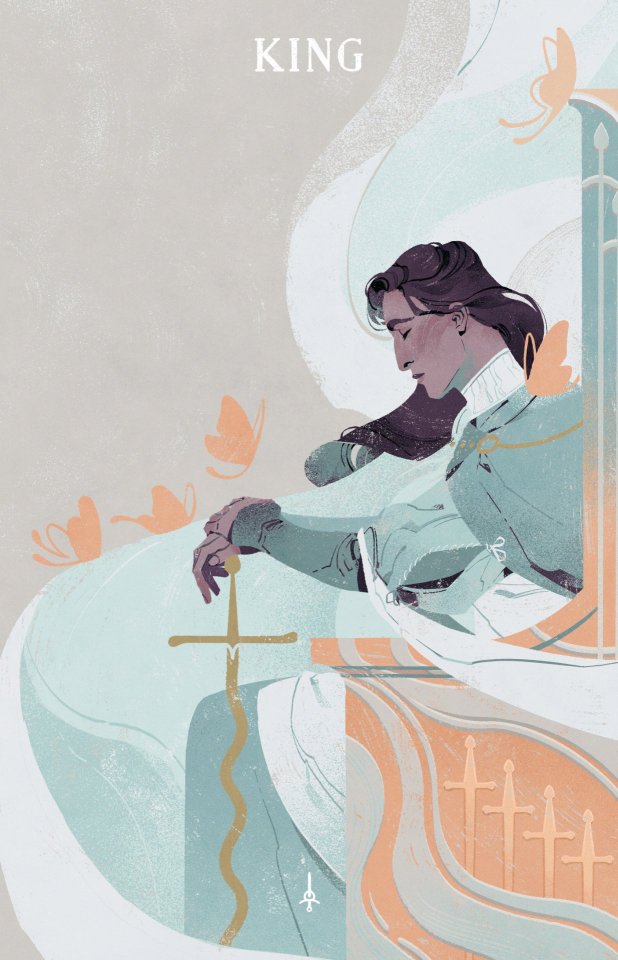
King of Swords. Art by Viv Tanner and Eli Baum, from Sefirot.
“Blow out, you bugles, over the rich Dead!
There's none of these so lonely and poor of old,
But struggle has made us rarer gifts than gold.”
81 notes
·
View notes
Text

12 notes
·
View notes
Text
Jinbe now as a strawhat just becomes a climbing structure for the crew. Now chopper isn't the only one who can get on people's shoulders
#this based on nami climbing him for like the second time til now#well at least the chef cares avout the people.... or not??? what was that#mama saved by the cloud.... whatever...#caesars heart!!! its been like 200 episodes lmao#and mama goes wild again!!!!! more distractions for her children letsgo#caesar wanting attention .... the new world's buggy#talking tag#watching one piece#episode 843#'my heart trembled. a beautiful lady must have talked about me' ajdhaksh#the germa soldiers are kinda mid for steuggling against moms forces.... like you were made for this.... whats the deal#episode 844#zeus new nami slave!!! two on her belt now!! she is gonna become invincible#oh nvm#nami hiding behind jinbe..... no new slave but yes new shield#king baum running to see her wife again lmao ajsjaksjak love is real in one piece#pedro offering to light sanji's cigarette.... gay sex is less subtle#are they basically clones... yeah but thats just what happens sometimes#i love how luffy just grabs nami and jumps whenever#rip king baum...... poor wife.... nami will shed a tear tonight on the sunny#chiffon saying no to the cake.... hell yeah#pudding do not fucking lie about saving them..... or was she lying before..... well she was jealous so i don't trust her yet..#but she is crying from her third eye....#episode 845#'looks like this time its about a wedding cake' *kicks a tree to oblivion*#it makes a lot of sense that zeus can be bought with 'food' considering whose soul it is#AND SANJI CAN FLY??? DAMN HELP CARROT GET HIGH IDK#well pedro to the rescue as always..... being a sanji copy with a sword is so.... well a choice... bc who else has a sword.... exactly. gay#NAMI CONTROLLING ZEUS????? IT REALLY IS HER SLAVE NOW!!! that was the most damage big mom has taken yet btw..... god nami when...#episode 846
4 notes
·
View notes
Text

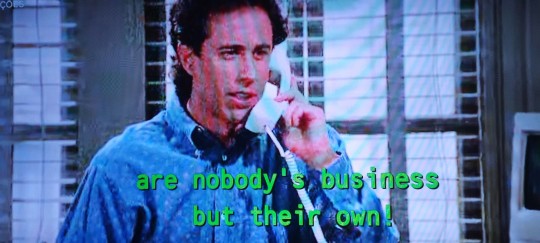
Pride Rainbow Jerry Sweaters would look much more genuine than the scummy Pride Rainbow Mickey Sweaters I've seen out there .....
#Seinfeld#Jerry Seinfeld#im revisiting this because Matt Baume talked about this episode today#and Im so glad I did#Disney#i hate you Disney#all your mickey lion king stitch pride merch fucking sucks#i almost bought one of those this week because my mom really liked it#and it would be a fun subtle way for her to know im queer#but honestly.....I feel far more validated when I see a scene like this#from one of my favorite artists IN THE 90s!!!!!#then seeing a shitty rainbow nala shirt at the store that has no connection whatsoever with the actual source material#now I don't know if that's how the real Jerry feels#but if he was disgusted by gay people or something would this episode have even happened in the first place?#lgbtq#oh sorry for the super shitty quality im like on the cheapest Netflix plan lmao
32 notes
·
View notes
Text


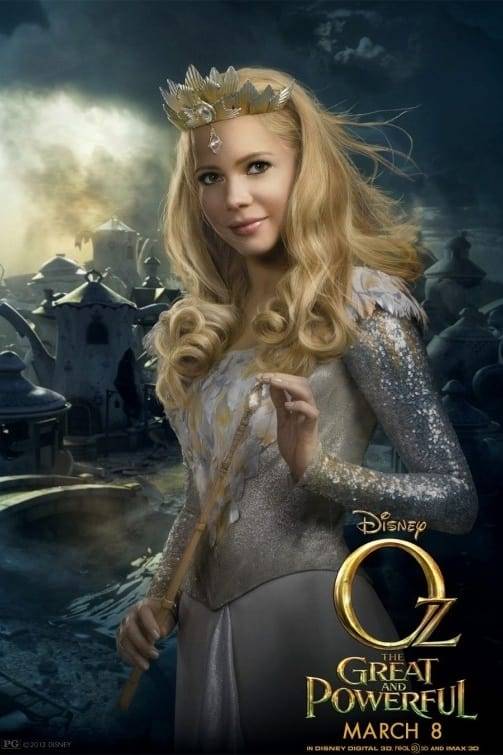


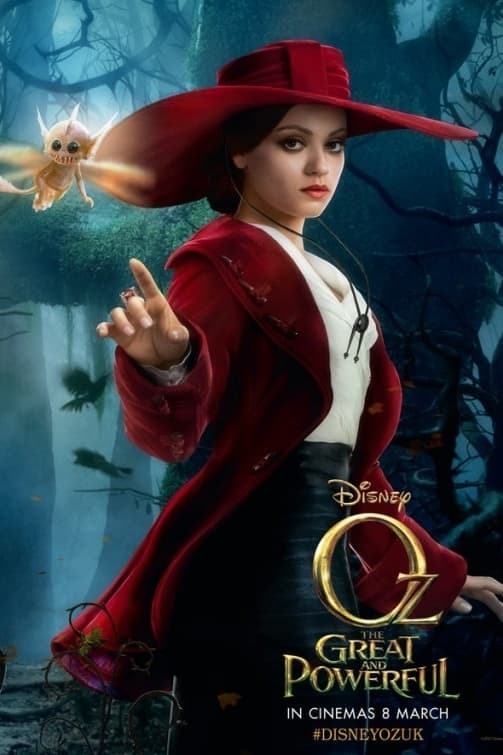
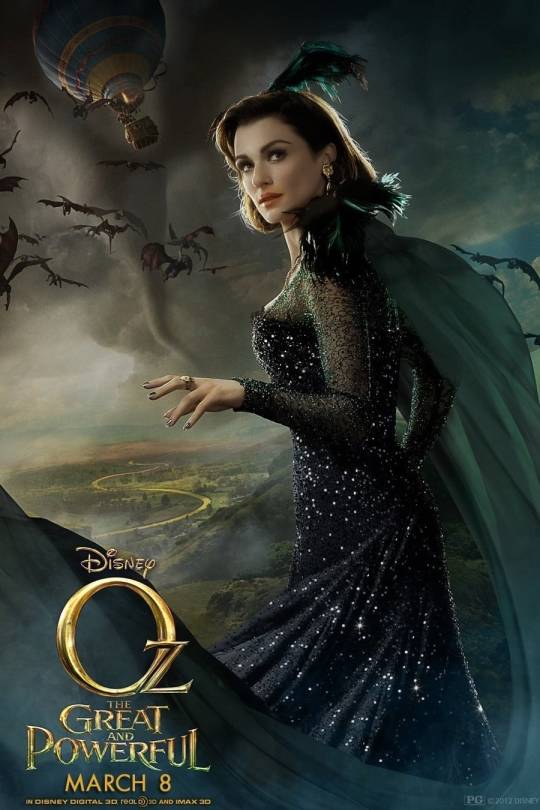
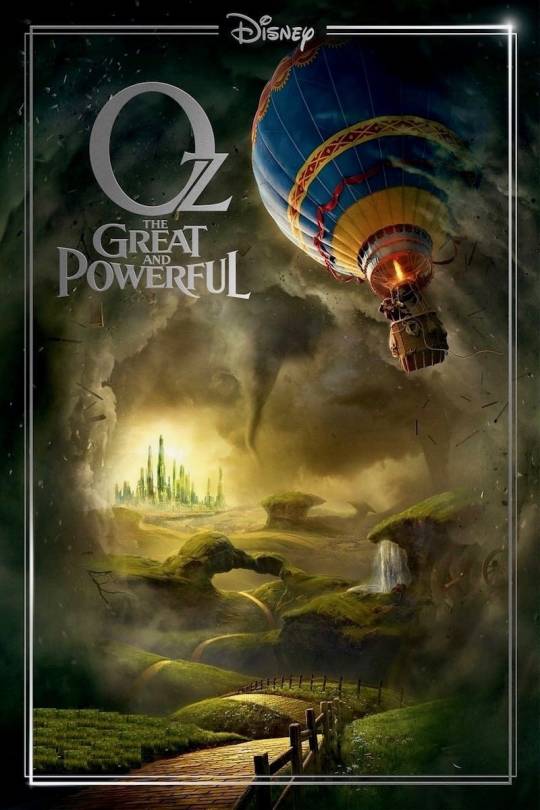
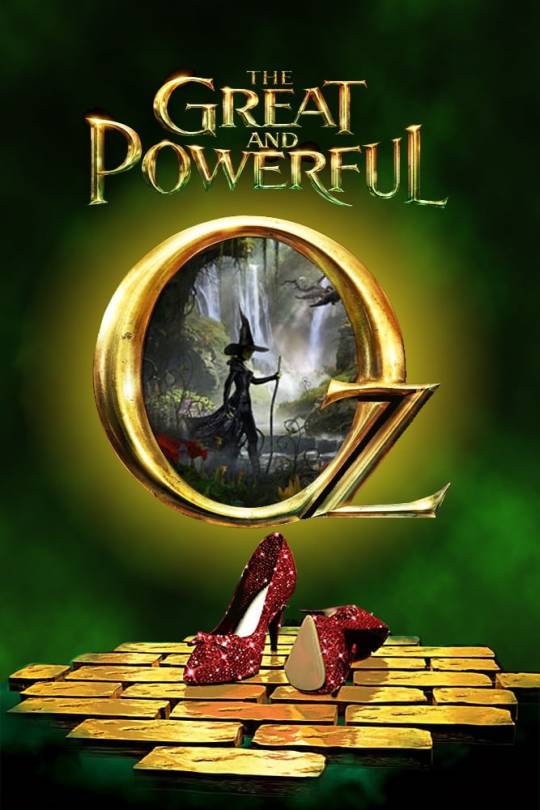

W A T C H I N G
Mainly Mom's choice.
Poor momma is trying to mend herself.
I've wanted to see this for a while.
My mom grew up seeing the old Wizard of Oz, I also was a kid raised o. That old film - like so many.
It's a nice spooky fun prequel.
[Also, MILA KUNIS' "second outfit" gets me hot, broh.]
#OZ THE GREAT AND POWERFUL (2014)#JAMES FRANCO#MILA KUNIS#RACHEL WEISZ#MICHELLE WILLIAMS#ZACH BRAFF#Bill Cobbs#Joey King#Tony Cox#Bruce Campbell#SAM RAIMI#WATCHING#FANTASY#L. Frank Baum#adventure
12 notes
·
View notes
Quote
Einen Baum zu pflanzen, zeigt, dass man Hoffnung und Vertrauen in die Zukunft hat.
Charles III., König und Ex-Bauer
5 notes
·
View notes
Text
March 2024 TBR

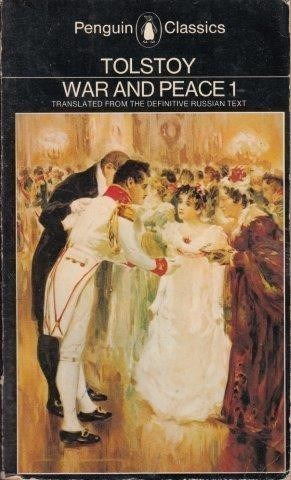

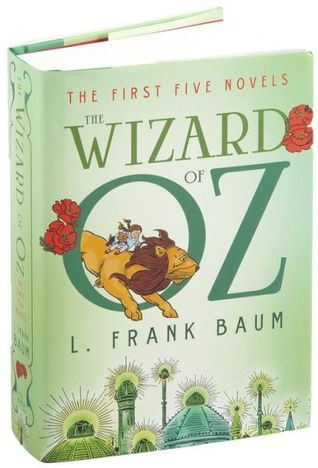
The Marvelous Land of Oz
Ozma of Oz
Dorothy and the Wizard in Oz
The Road to Oz


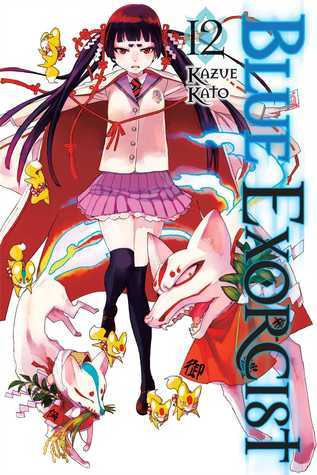
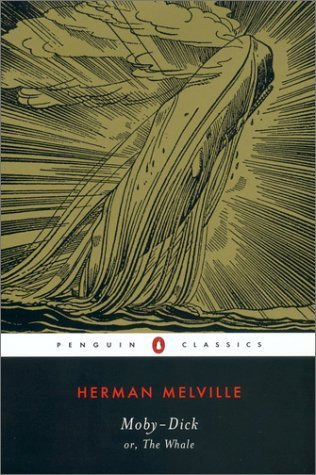


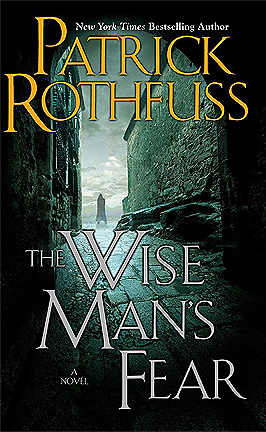

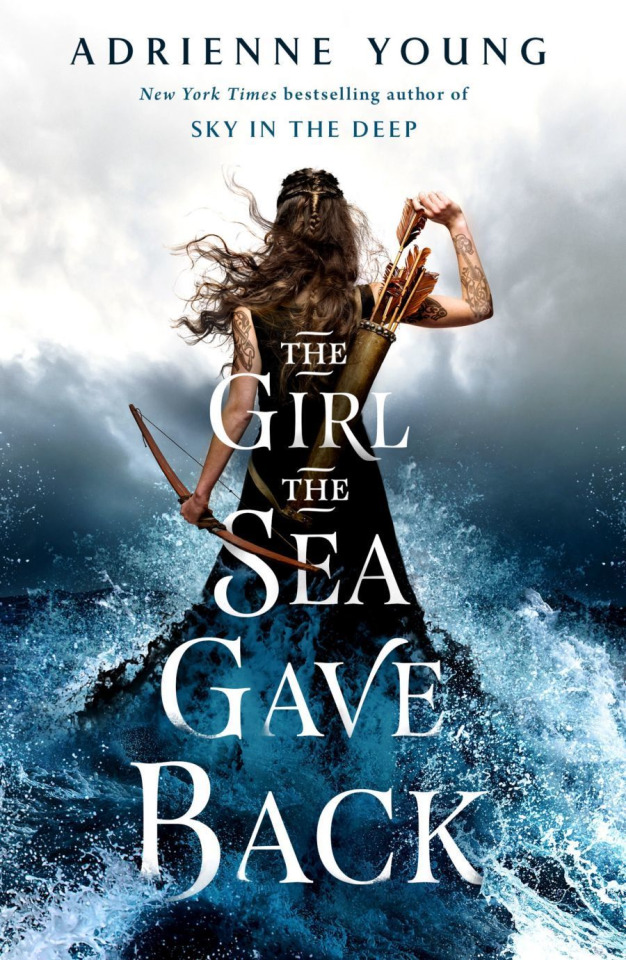


(re-read, I love this series)
#March 2024#TBR#booklr#Martha Wells#Witch King#War and Peace I#leo tolstoy#Gridlinked#Neal Asher#The Marvelous Land of Oz#Ozma of Oz#Dorothy and the Wizard in Oz#The Road to Oz#L. Frank Baum#The Princetta#Anne-Laure Bondoux#An Echo of Things to Come#James Islington#Blue Exorcist Volume 12#Blue Exorcist#Kazue Kato#Moby Dick#herman melville#Whale Weekly#The Tale of Genji#murasaki shikibu#To Kill a Shadow#Katherine Quinn#the wise man's fear#patrick rothfuss
1 note
·
View note
Text
Sources for Somerton's Plagiarism from Hbomberguy's Video (as much as I could get)
I went back through Harry's video, focused entirely on the sources James Somerton pulled from in the hopes of creating as much of a comprehensive list as I could--though my Google-Fu is not very strong. I did however find something I thought was forever lost and that made me very happy--specifically the magazine Midlands Zone containing the column by Steven Spinks that Harry poignantly used as an illustration of gay erasure... while Somerton uses it to sound like HE is waxing remorseful about the very subject.
This is not a complete list, I'm sure. For one thing, I was only able to attempt to pull sources that Harry himself mentioned in the video. Surely there's so very much more out there. I expect there to be a great deal more internet archeology to unearth just how much writing and culture Somerton has stolen like he's the British Museum of Natural History but for gay people.
- - - - -
Harry's list of mentioned youtubers:
Alexander Avila - https://www.youtube.com/@alexander_avila
Matt Baume - https://www.youtube.com/@MattBaume
Khadija Mbowe - https://www.youtube.com/@KhadijaMbowe
Lady Emily - https://www.youtube.com/@LadyEmilyPresents
Shanspeare - https://www.youtube.com/@Shanspeare
RickiHirsch - https://www.youtube.com/@RickiHirsch
VerilyBitchie - https://www.youtube.com/@verilybitchie
Harry created a convenient playlist of videos by these and other people he wants to bring to everyone's attention.
Please give them your support.
- - - - -
Midlands Zone Magazine - Column by Steven Spinks
After a great deal of searching, I found an archive of the "Midlands Zone" magazine, where you can read through past issues dating all the way back to February 2014. I have also found the issue from which Somerton took Spinks' poignant discussion of gay erasure:
Overall archive
Specific Issue - Pages 16-17
It will not allow you to download it, but you can read it exactly as it appeared in print form.
- - - - -
My best effort to find the exact book or article Somerton lifted from to be able to get attention to the original writers
Tinker Bells and Evil Queens
By Sean Griffin
The Celluloid Closet
By Vito Russo
Wikipedia article about the book
Wikipedia article about the documentary
My weak google-fu could not find where you can access the book or documentary. Check your local municipal or university library for book or documentary, or if you know a good source for one or both, please reblog with it added
Camp and the Gay Sensibility
By Jack Babuscio
The Groundbreaking Queerness of Disney's Mulan
By Jes Tom
Personal site with links to social media accounts
Why Rebel Without a Cause was a milestone for gay rights
By Peter Howell
Why "The Craft" is still the best Halloween coming out movie
By Andrew Park
Opinion: From facehuggers to phallic tails, is 'Alien' one of the queerest films ever?
By Dani Leever
Women and Queerness in Horror: Jennifer's Body
By Zoe Fortier
[Pride 2019] We Have Such Sights to Show You: Hellraiser and the Spectrum of Queerness
By Alejandra Gonzalez
Revealing the Hellbound Heart of Clive Barker's 'Hellraiser'
By Colin Arason
Queering James Cameron's Aliens (1986)
By Bart Bishop
Demeter and Persephone in space: transformation, femininity, and myth in the 'Alien' films
By David Greven
Fears of a millennial masculinity: Scream's queer killers
By David Greven
(Scholarly site, unable to access original work, offers a way to request a full copy of the text in PDF)
Queer Subtext in Stephen King's It - Part 1: 'Reddie' Character Analysis
By Rachel Brands
Rachel is the very unfortunate lady who found out she was being stolen from because she supported Somerton through Patreon and saw one of his videos early with her writing--lacking any form of citation or credit
How 'It: Chapter Two' Leaves Richie Tozier Behind
By Joelle Monique
When Horror Becomes Strength: Queer Armor in Stephen King's 'IT'
By Alex London
Why Queer People Love Witchcraft
By Amanda Kohr
'The Favourite' Queers The Past And The Present
By Giorgi Plys-Garzotto
(Wuko) Crush (Mako x Wu)
By MoonFlower on YouTube
5 Terrible Movies With Awesome Hidden Meanings
By J.F. Sargent
The Radicalization of Sexuality: The Queer Casae of Jeffrey Dahmer
By Ian Barnard
Netflix's 'Dahmer' backlash highlights ethical issues in the platform's obsession with true crime
By Shivani Dubey
The Possible Disturbing Dissonance Between Hajime Isayama's Beliefs and Attack on Titan's Themes
Original Article by "Seldom Musings"
(Author has made all posts not related to Attack On Titan private and has retired from the blog)
Everyone Loves Attack on Titan. So Why Does Everyone Hate Attack on Titan?
By Gita Jackson
- - - - -
The following people are otherwise named in the video. There are no direct citations of articles or books by them in said video. I am unable to guarantee that I have identified the correct individual.
Darren Elliott-Smith
Michaela Barton
David Church
Claire Sisco King
Amanda Howell
Jessica Roy
- - - - -
Telos announced and cancelled a film likely based on this book:
The Final Girl Support Group - By Grady Hendrix
- - - - -
I refrained from including certain sources.
First off only focusing on Somerton's work.
Secondly not including anything that might be visible enough to not require amplifying their voice (I cannot speak for all of those I have found links to, but journalism is frequently a thankless job).
Thirdly any source that is of a nature that is antithetical to the very existence of the queer community, such as the right-leaning source that didn't make it into Somerton's video, but Harry was able to identify as a source he had considered using.
If you feel I have missed a mentioned source--or you know of a source from material that was not covered in Harry's video--please do not hesitate to reblog with added details.
- - - - -
Please share this information far and wide, and please add to it if you find more material that can be positively identified and linked to the creator/writer.
#hbomberguy#james somerton#Plagiarism#Queer#LGBT#LGBTQIA#youtube#Solidarity#gay erasure#Make them un-erased
10K notes
·
View notes
Text

ACER PLATANOIDES 'CRIMSON KING'
Der Rote Spitzahorn 'Crimson King' (Acer platanoides) ist ein dichter, rundlicher Großbaum oder Baum, der grüngelbe, in Doldentrauben angeordnete Blüten hervorbringt. Sie erscheinen im April. Seine Rinde ist dunkelgrau, längsgefurcht. An einem sonnigen bis halbschattigen Standort erreicht er gewöhnlich eine Höhe von ca. 15 m und wird ca. 10 m breit. An den Boden stellt der Rote Spitzahorn 'Crimson King' keine besonderen Ansprüche.
#Acer platanoides 'Crimson King'#Roter Spitzahorn#Großbaum#Baum#Blüten#Rinde#Sonnig#Halbschattig#Pflanzenpflege#Garten#Gartenbau
0 notes